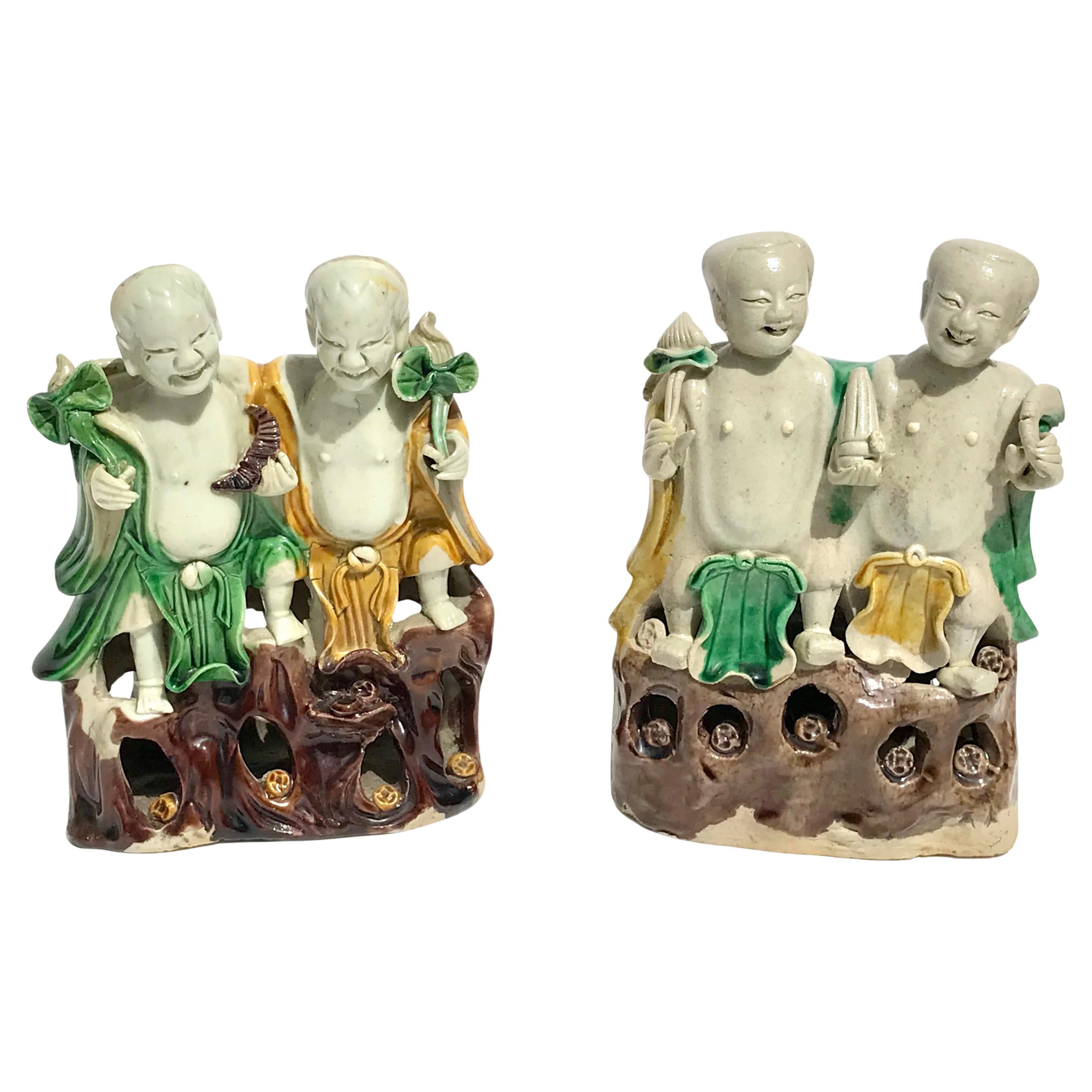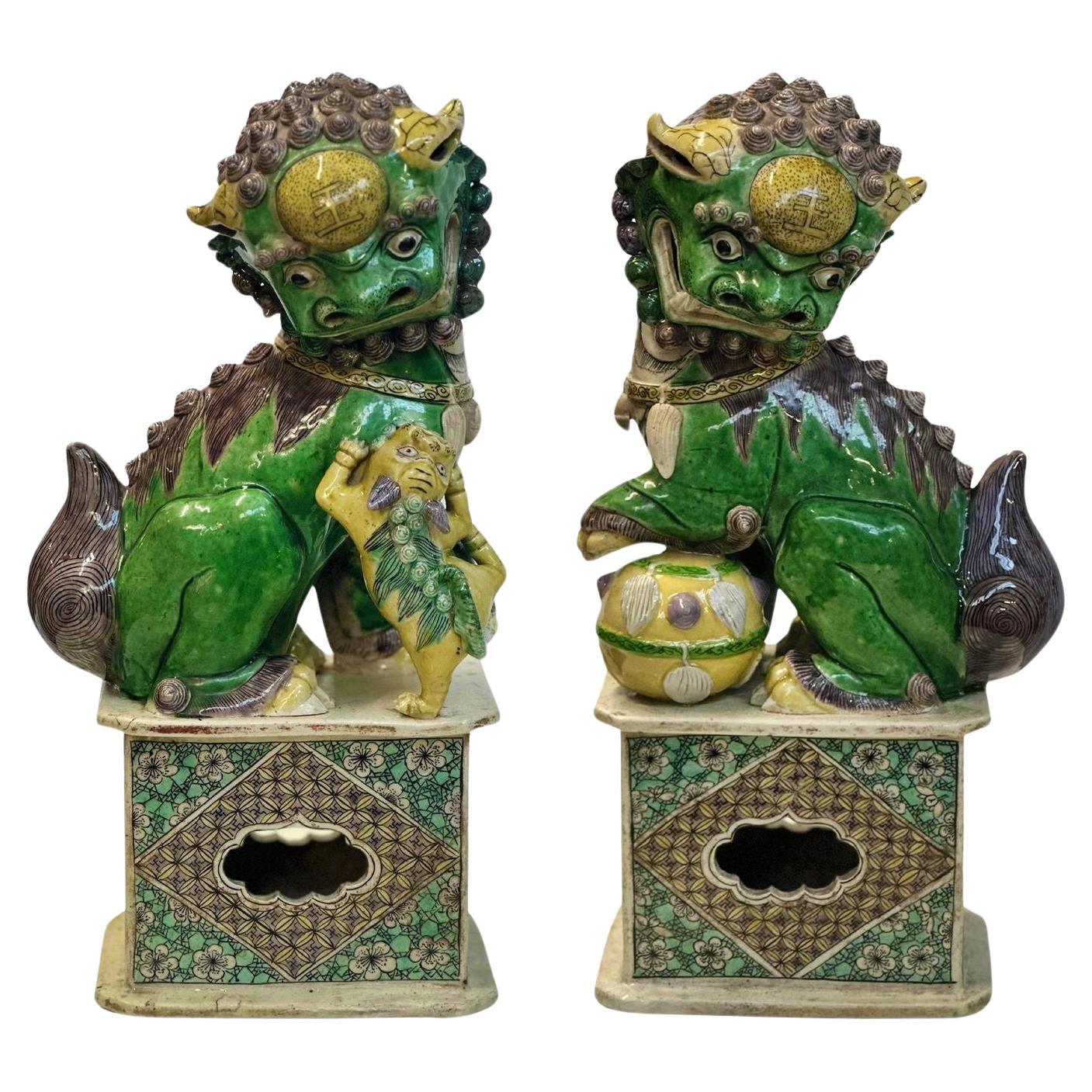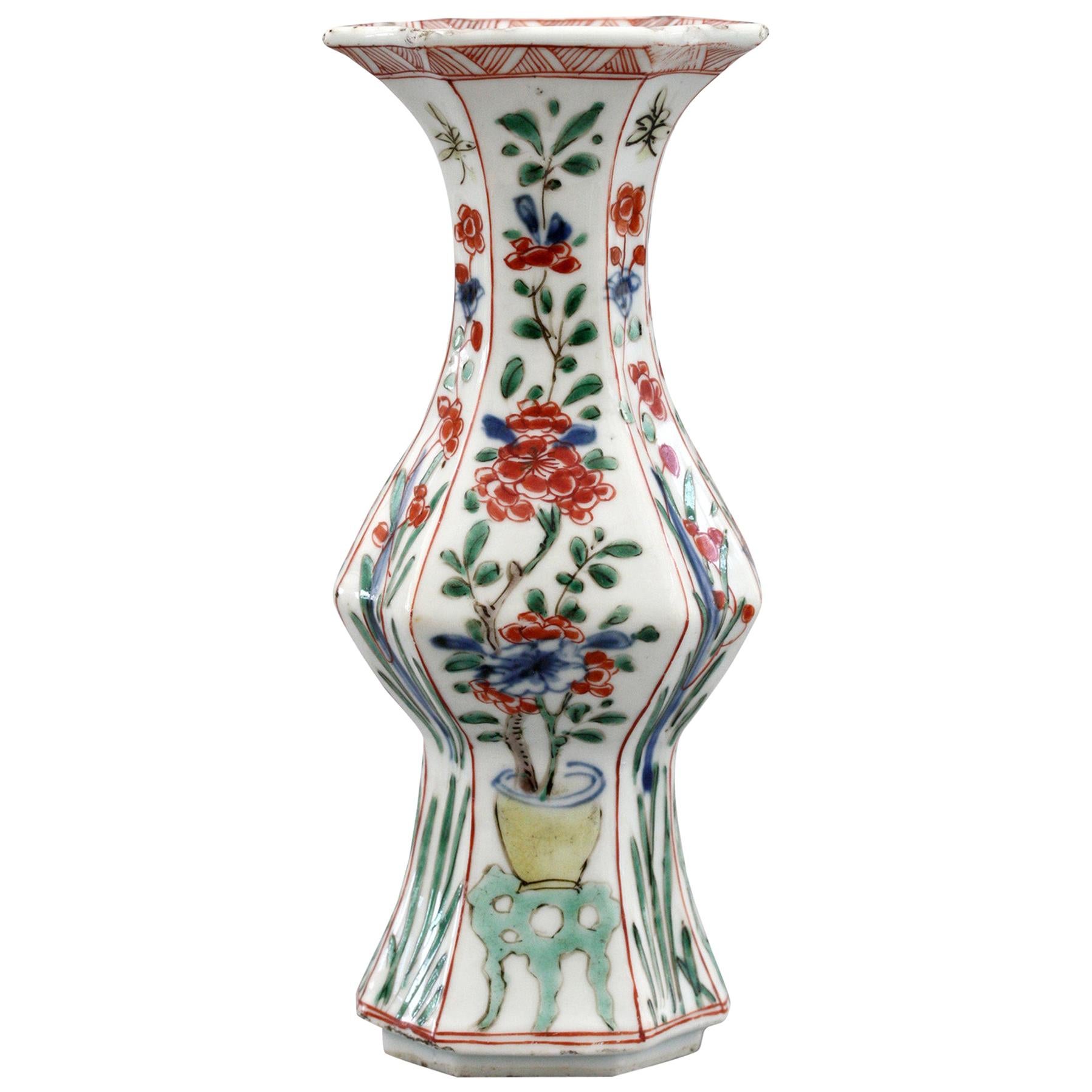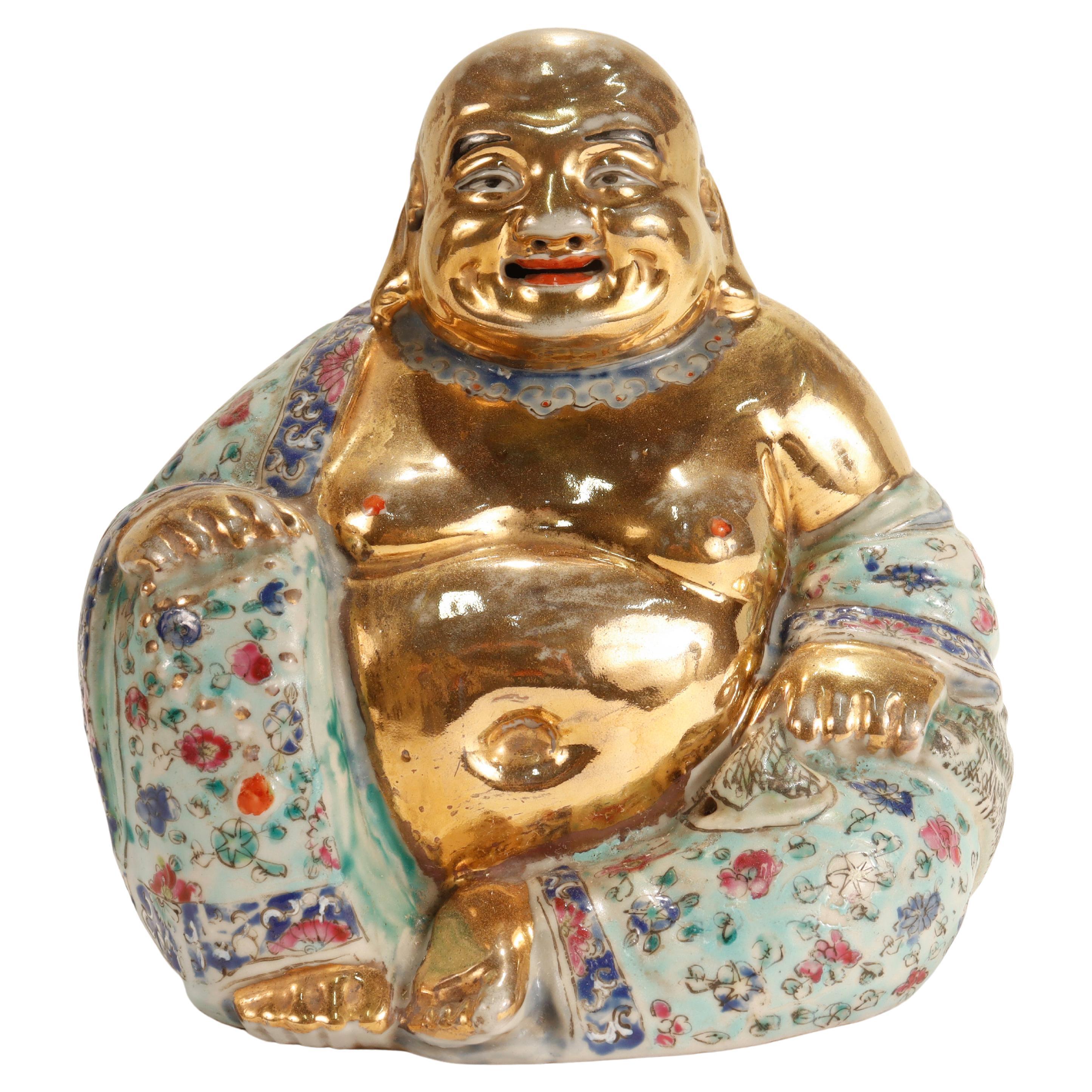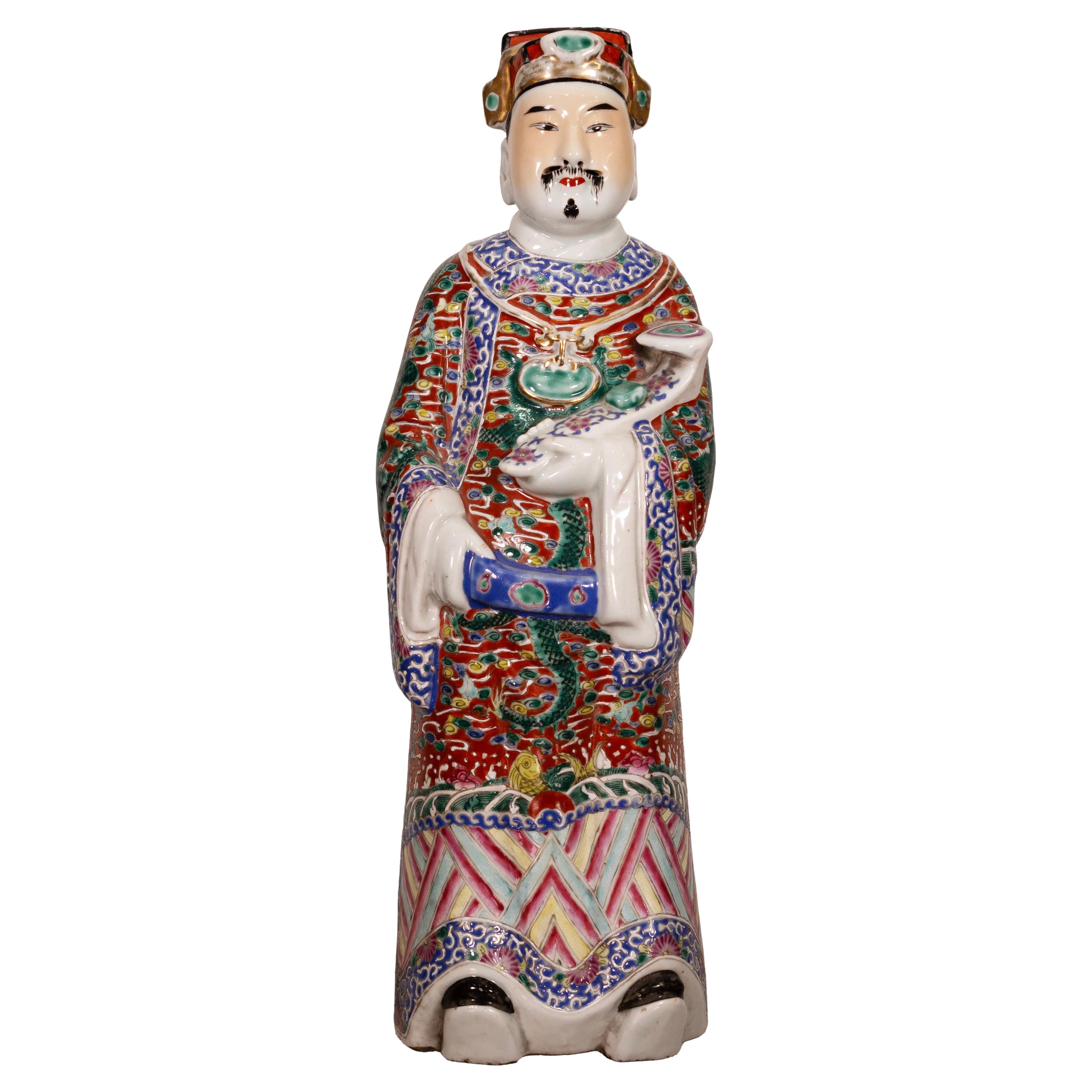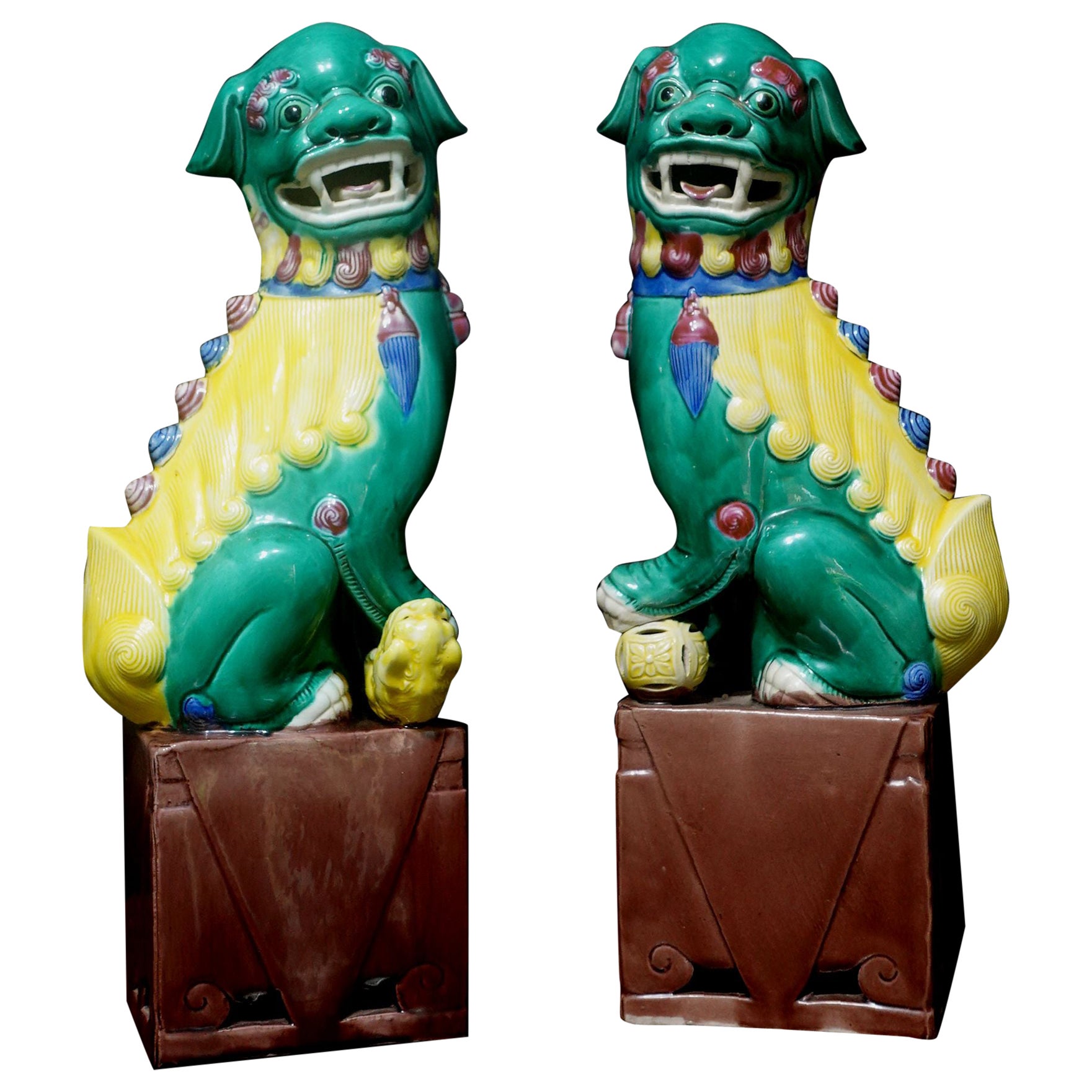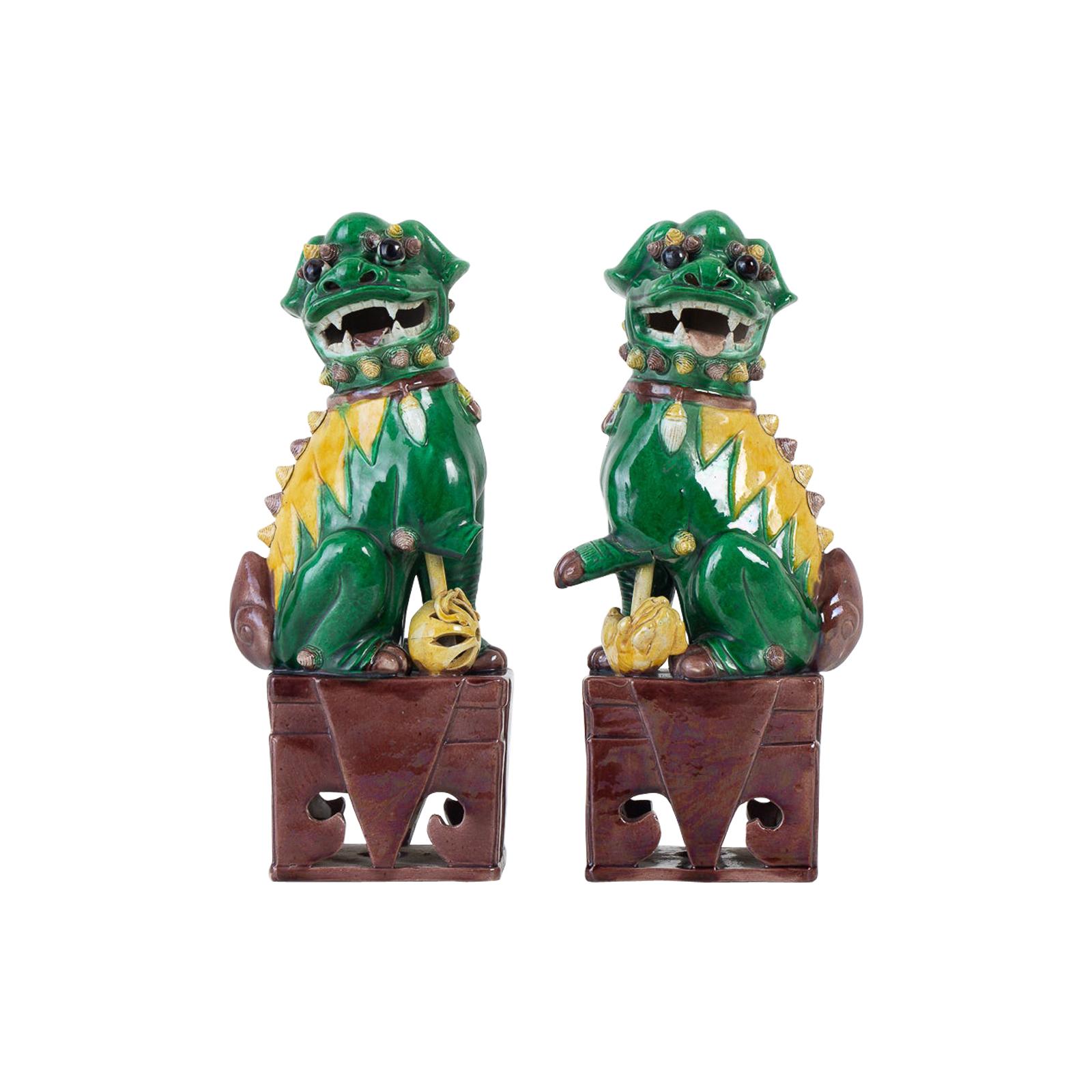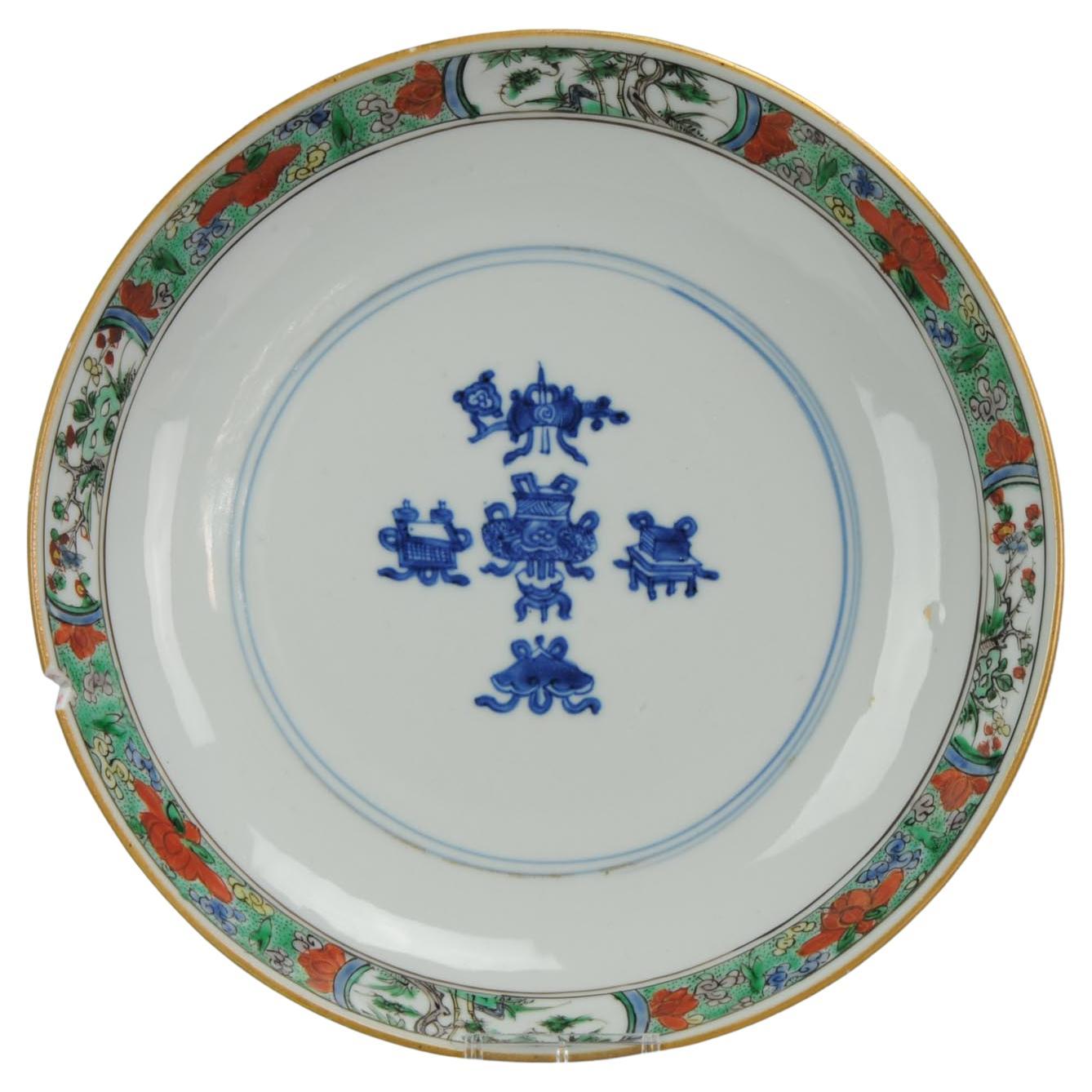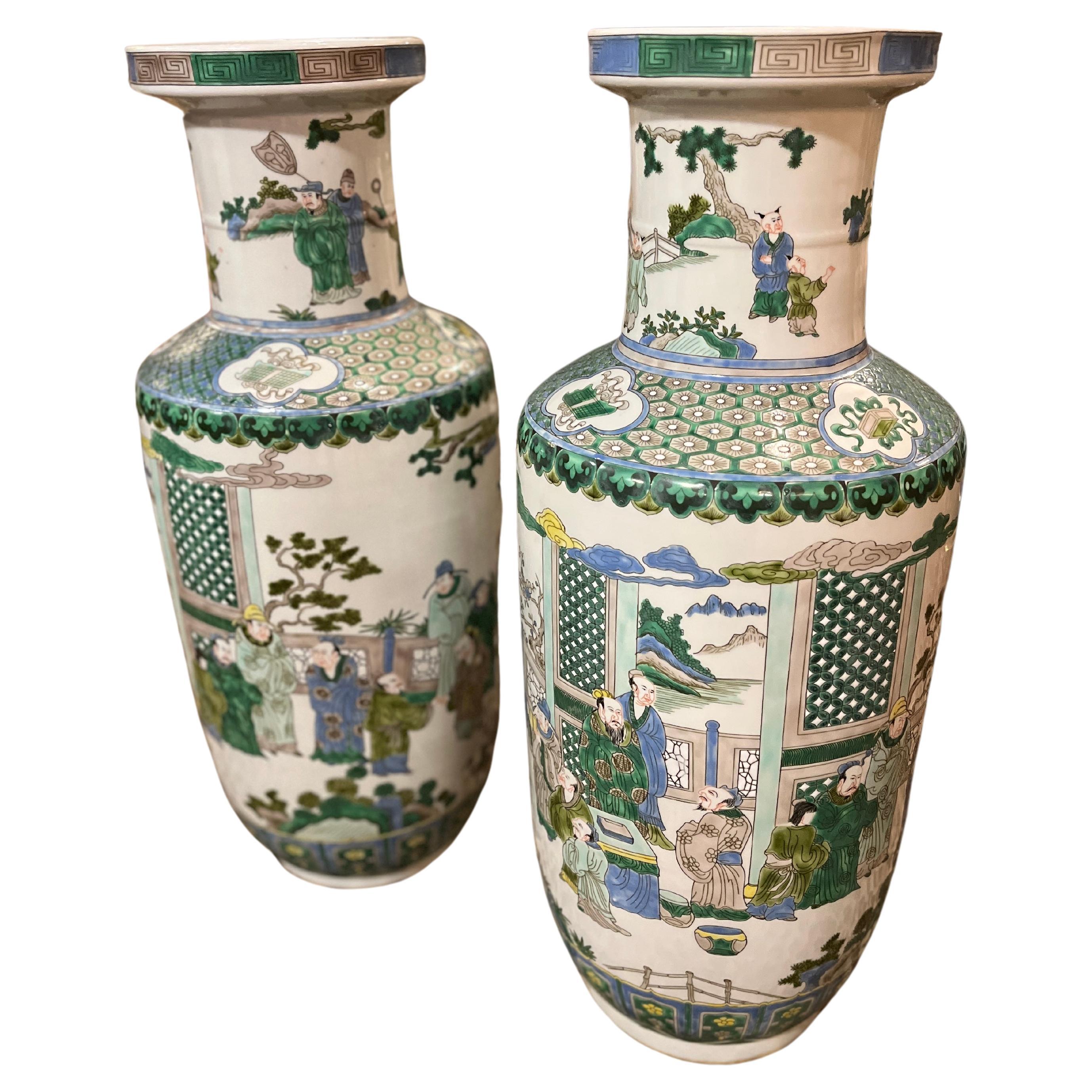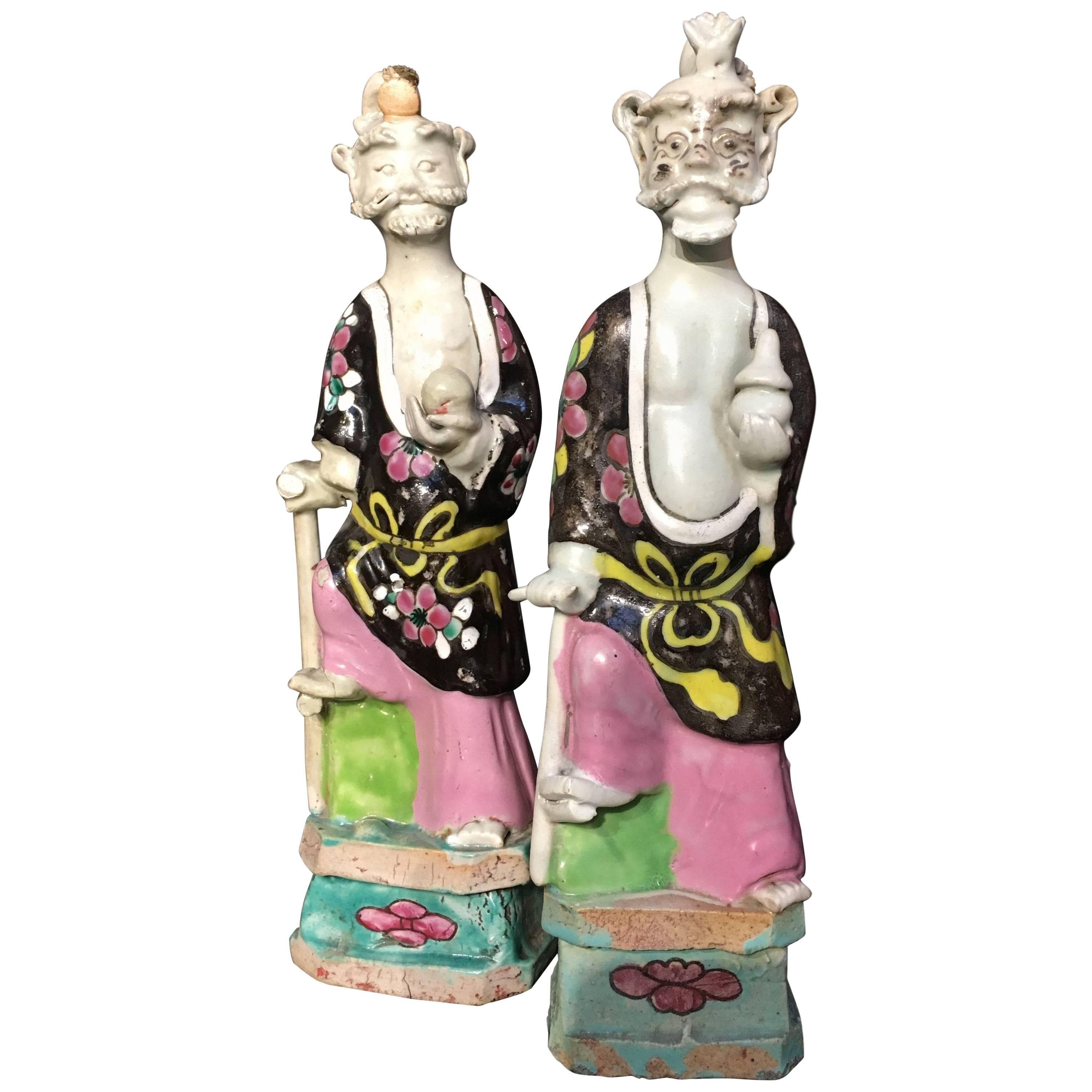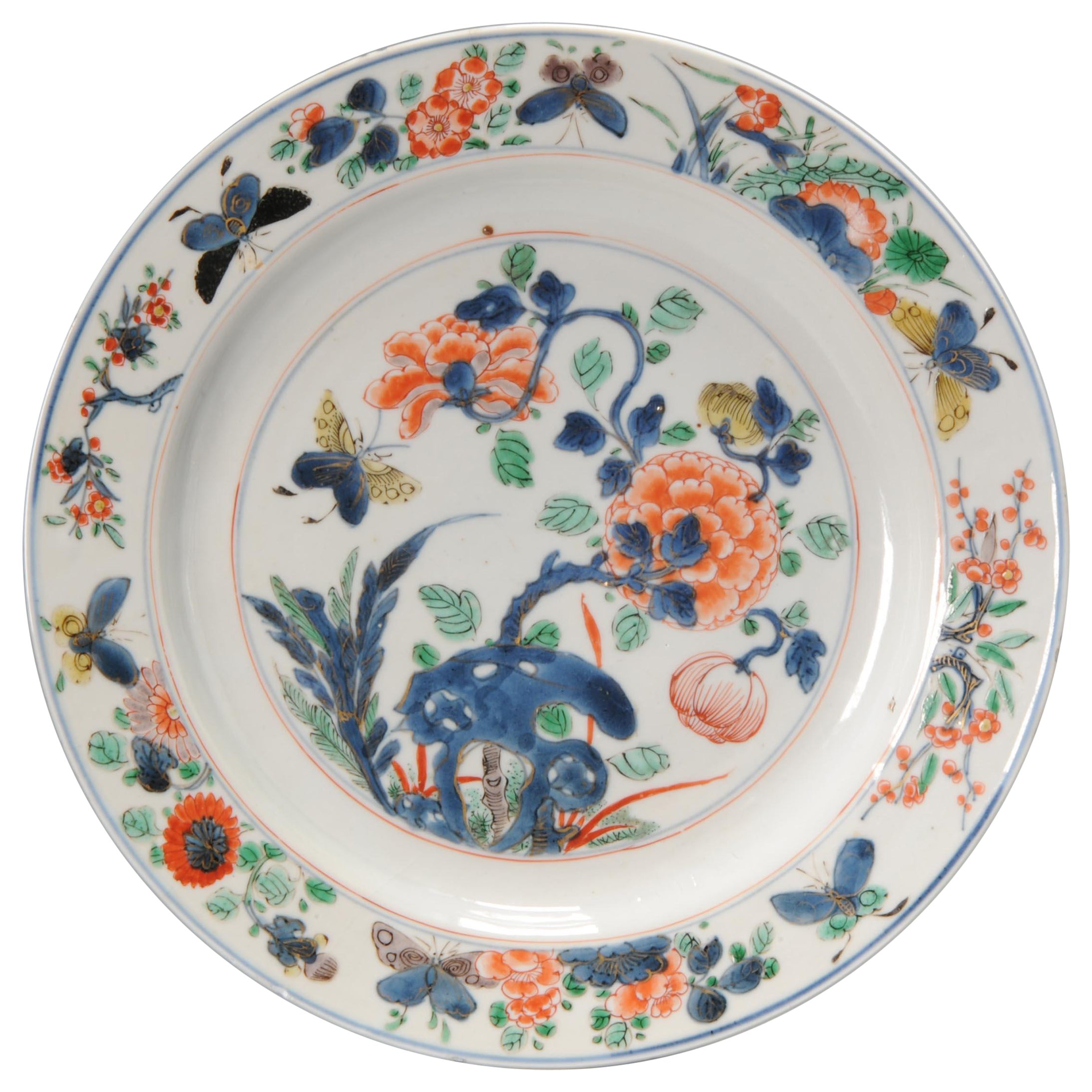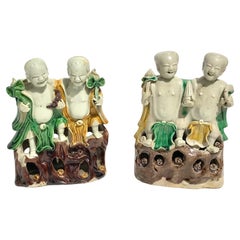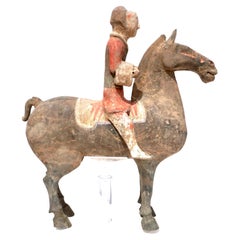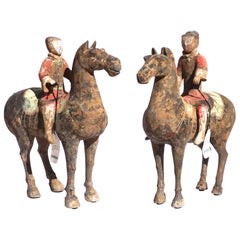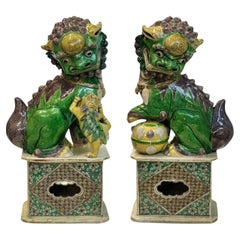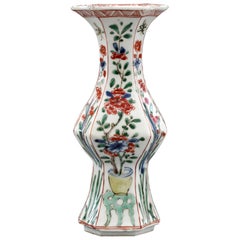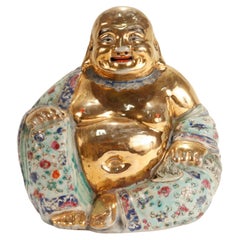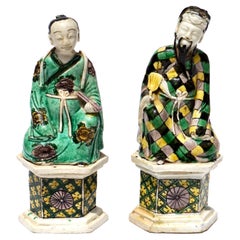
Kangxi Famille Verte Porcelain Immortals Zhong Li Quan and Lan Cai He
View Similar Items
Want more images or videos?
Request additional images or videos from the seller
1 of 9
Kangxi Famille Verte Porcelain Immortals Zhong Li Quan and Lan Cai He
About the Item
- Dimensions:Height: 6.3 in (16.01 cm)Diameter: 2.75 in (6.99 cm)
- Style:Chinese Export (Of the Period)
- Materials and Techniques:Porcelain,Fired
- Place of Origin:
- Period:1700-1709
- Date of Manufacture:1700
- Condition:Minor losses. Read description.
- Seller Location:Dallas, TX
- Reference Number:1stDibs: LU1774234835272
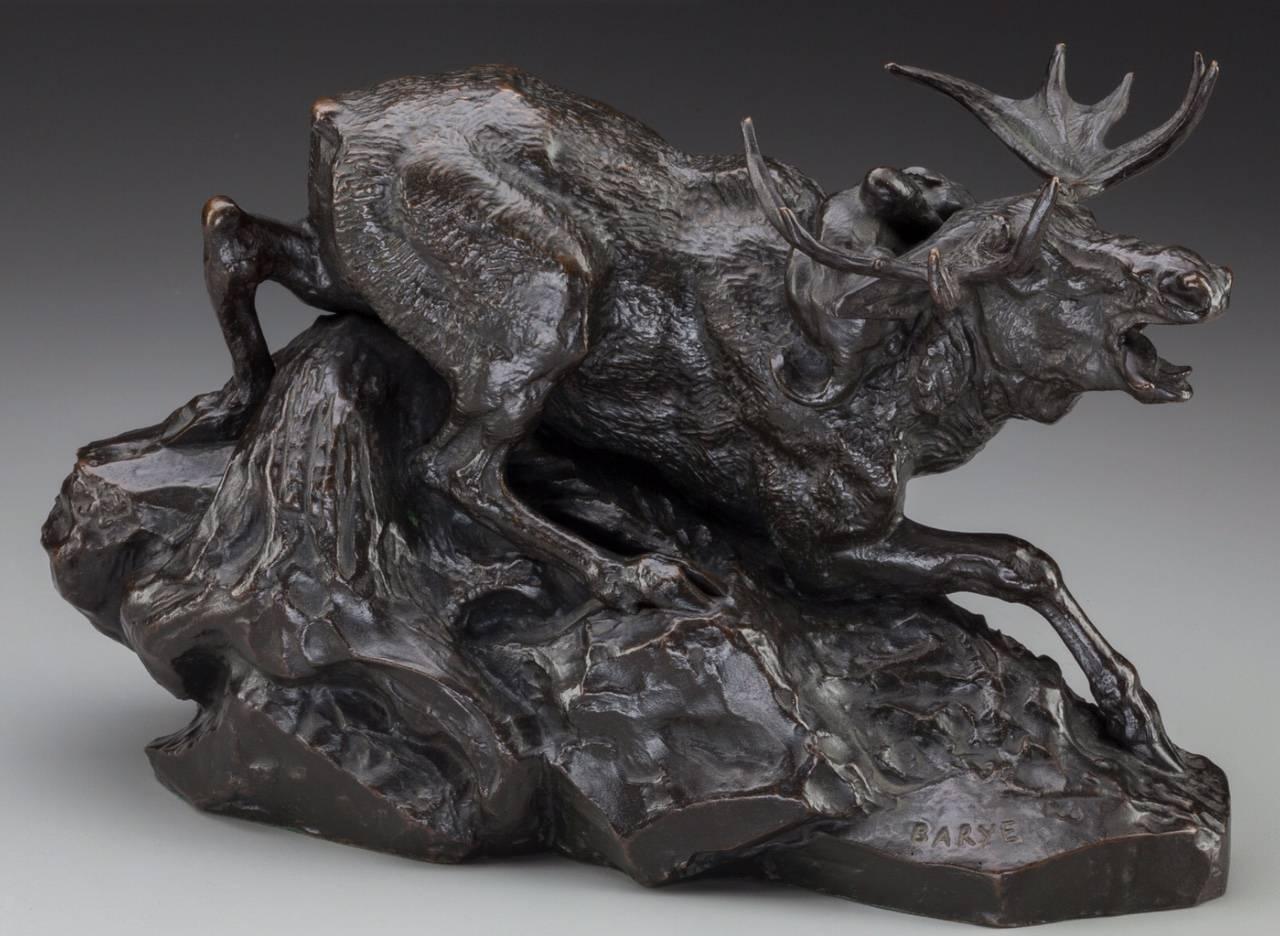
About the Seller
4.9
Gold Seller
Premium sellers maintaining a 4.3+ rating and 24-hour response times
Established in 2000
1stDibs seller since 2015
438 sales on 1stDibs
Typical response time: 1 hour
Authenticity Guarantee
In the unlikely event there’s an issue with an item’s authenticity, contact us within 1 year for a full refund. DetailsMoney-Back Guarantee
If your item is not as described, is damaged in transit, or does not arrive, contact us within 7 days for a full refund. Details24-Hour Cancellation
You have a 24-hour grace period in which to reconsider your purchase, with no questions asked.Vetted Professional Sellers
Our world-class sellers must adhere to strict standards for service and quality, maintaining the integrity of our listings.Price-Match Guarantee
If you find that a seller listed the same item for a lower price elsewhere, we’ll match it.Trusted Global Delivery
Our best-in-class carrier network provides specialized shipping options worldwide, including custom delivery.More From This Seller
View AllTwo Chinese Famille Verte Porcelain HeHe Groups Kangxi Period
Located in Dallas, TX
A Pair of Chinese famille verte laughing twins 'HeHe Erxian' biscuit group, Kangxi (1662-1722), the two boys with jovial expressions and seated upon an openwork rock-base studded wit...
Category
Antique 17th Century Chinese Chinese Export Figurative Sculptures
Materials
Porcelain
Han Dynasty Polychromed Horse and Rider
Located in Dallas, TX
A fine Han dynasty polychrome painted terracotta horse and rider. The warrior is dressed in orange and black on a black horse.
Measures: Height 14 inches (35 cm)
Width 12.5 inches (32 cm).
Condition: Excellent with tastefully undetectable repairs.
During the unification of China under the Han dynasty, bands of mounted nomadic warriors from the north threatened the country. In order to thwart their attacks, the Chinese sought to import stronger, faster steeds from Central Asia (as opposed to the Mongol ponies used by the invaders), eventually leading to the creation of the Silk Road. This small sculpture of a mounted soldier reveals the crucial military role of the horse. When compared to the diminutive stature of the rider, the importance of the horse becomes readily apparent. This creature provided security and strength, allowing the empire to secure its borders and expand its influences across Central Asia. The magnificent regalia of the horse, including a brilliantly painted saddle in red and green/gold, reflect the respect this animal received. The warrior as well is gorgeously decorated with a painted red tunic and gray chest...
Category
Antique 15th Century and Earlier Chinese Han Figurative Sculptures
Materials
Terracotta
Han Dynasty Pottery Horse and Rider
Located in Dallas, TX
Han Dynasty painted pottery horse and rider
A Chinese Han Dynasty painted pottery horse & rider. Made from grey pottery and cold-painted in white, red and black pigments. The rider dressed as a warrior and in the pose of holding reins for the horse. Comes with a custom sturdy lucite stand.
Measures: Height: 13.5 inches (33cm).
Length: 13 inches
Depth: 5 inches
Han Dynasty (206 BC – AD 220).
Condition: Very good with past restoration to legs.
The great influence of the horse throughout the history of China can...
Category
Antique 15th Century and Earlier Chinese Han Animal Sculptures
Materials
Pottery
Pair of Han Dynasty Pottery Horses and Equestrian Riders
Located in Dallas, TX
A wonderful pair of Ex Sotheby’s painted Polychrome Equestrian Horse and Riders made from gray pottery, Presents beautifully and guaranteed authentic with provenance and COA.
Measures: Height 11.5 inches and width 11 inches
Condition: Possible professional restorations but not detectable.
Provenance: Sotheby’s London. 16th November, 1999. Lot 12 (2 of 4 horses in that lot).
Sotheby’s New York, NY September 14, 2019.
The importance of the horse in the history and culture of China can be viewed, in part, through the artistic legacy of this great civilization. In sculpture, painting, and literature, horses were glorified and revered. Horses were believed to be related to mythological dragons, reflecting their sacred status within society. During the unification of China under the Han Dynasty, bands of mounted nomadic warriors from the north threatened the country. In order to thwart their attacks, the Chinese sought to import stronger, faster steeds from Central Asia (as opposed to the Mongol ponies used by the invaders), eventually leading to the creation of the Silk Road. This small sculpture of a mounted soldier reveals the crucial military role of the horse. When compared to the diminutive stature of the rider, the importance of the horse becomes readily apparent. This creature provided security and strength, allowing the Empire to secure its borders and expand its influences across Central Asia. The magnificent regalia of the horse, including a brilliantly painted saddle in red and green/gold, reflect the respect this animal received. The warrior as well is gorgeously decorated with a painted red tunic and gray chest...
Category
Antique 15th Century and Earlier Chinese Chinoiserie Animal Sculptures
Materials
Pottery
Tang Dynasty Museum Fat Lady and Child TL Tested
Located in Dallas, TX
Tang Dynasty polychromed fat lady with child in arm. TL Tested
Terracotta, pottery with traces of orange and green paint
Sui to Tang Dynasty (581-618)
Measures: Height: 20.2 inches (51cm)
Width: 9.45 inches (24cm)
Guaranteed Authentic with corresponding TL Thermoluminescence Test conducted by Artemis Testing Lab Included in the sale of this item.
Condition: Excellent with loss to pinky and wear commensurate of age.
This rare and outstanding ceramic court attendant was made during what many consider to be China’s Golden Age, the T’ang Dynasty. It was at this point that China’s outstanding technological and aesthetic achievements opened to external influences, resulting in the introduction of numerous new forms of self-expression, coupled with internal innovation and considerable social freedom. The T’ang dynasty also saw the birth of the printed novel, significant musical and theatrical heritage and many of China’s best-known painters and artists. The T’ang Dynasty took control in 618 AD, when the Li family seized power from the last crumbling remnants of the preceding Sui Dynasty. This political and regal regime was long-lived, and lasted for almost 300 years. The imperial aspirations of the preceding periods and early T’ang leaders led to unprecedented wealth, resulting in considerable socioeconomic stability, the development of trade networks and vast urbanisation for China’s exploding population (estimated at around 50 million people in the 8th century AD). The T’ang rulers took cues from earlier periods, maintaining many of their administrative structures and systems intact. Even when dynastic and governmental institutions withdrew from management of the empire towards the end of the period – their authority undermined by localised rebellions and regional governors known as jiedushi –the systems were so well-established that they continued to operate regardless. The artworks created during this era are among China’s greatest cultural achievements. It was the greatest age for Chinese poetry...
Category
Antique 15th Century and Earlier Chinese Tang Figurative Sculptures
Materials
Terracotta
Tang Dynasty Large And Important Pottery Horse TL Tested
Located in Dallas, TX
Large And Important Tang Dynasty (618-907AD) Pottery Horse TL Tested. China.
Ca. 618-907 AD A beautiful pottery figure of a horse. The animal is shown in a...
Category
Antique 15th Century and Earlier Tang Animal Sculptures
Materials
Pottery
You May Also Like
Pair of Chinese Famille Verte Buddhist Lions from the Kangxi Period
Located in Los Angeles, CA
Pair of traditional Chinese Famille Verte male and female Buddhist lions belonging to the Kangxi period (1661-1722). Each stands on a plinth, one with its head to one side and having...
Category
Antique 1680s Chinese Animal Sculptures
Materials
Porcelain
Chinese Kangxi Octagonal Famille Verte Floral Painted Porcelain Vase
Located in Bishop's Stortford, Hertfordshire
A scarce Chinese Kangxi porcelain octagonal yen yen vase decorated with vases containing floral arrangements in the Famille Verte palette and ...
Category
Antique 1690s Chinese Qing Ceramics
Materials
Porcelain
Vintage Gilt Famille Verte Chinese Porcelain Seated Buddha/Luohan Ex-Lorin Marsh
Located in Philadelphia, PA
A fine vintage Chinese porcelain statue.
In the form of a Luohan or Arhat with a famille verte robe and gilt body.
The reverse ...
Category
20th Century Chinese Chinese Export Figurative Sculptures
Materials
Porcelain
Antique Chinese Famille Rose Porcelain Immortal Figurine Sculpture 19th Century
Located in Keego Harbor, MI
An antique Chinese "Famille Rose Immortal Figurine" sculpture. Circa 19th Century. Hand painted porcelain. Symbolizes luck, prosperity and longevity. From the estate of Florine Mark,...
Category
Antique 19th Century Chinese Figurative Sculptures
Materials
Porcelain
Pair of Supper Large (14.5") Chinese Famille Verte Glazed Porcelain Foo Dogs
Located in Norton, MA
Fine, large, and very detailed pair of Chinese famille verte glazed foo dogs from the early 20th century. The hollow biscuit porcelain figures stand raised on a rectangular base and ...
Category
Early 20th Century Chinese Other Figurative Sculptures
Materials
Porcelain
Pair of Chinese Famille Verte Foo Dogs on Stands
Located in Rio Vista, CA
Fierce pair of ceramic Chinese Foo dogs on stands depicted sitting. Made in a beautiful famille verte green with bright yellow accents. Large ...
Category
20th Century Chinese Chinese Export Animal Sculptures
Materials
Ceramic
$1,260 Sale Price / set
30% Off
Recently Viewed
View AllMore Ways To Browse
Antique Chinese Hat Stand
Chinese Porcelain Hat Stand
Original 1227
Li Lan
Antique Jester Figurine
Antique Sharpening Wheel
Art Deco Roland Paris
Atlas Bronze Statue
Auguste Lalouette
Aurora In Her Chariot
Austin Productions 1989
Austin Sculpture Art Deco
Austin Sculpture By Fisher
Axel Locher
Bamboo Motorcycle
Barbedienne Mercury
Barrias Nature
Blackhawk Furniture
